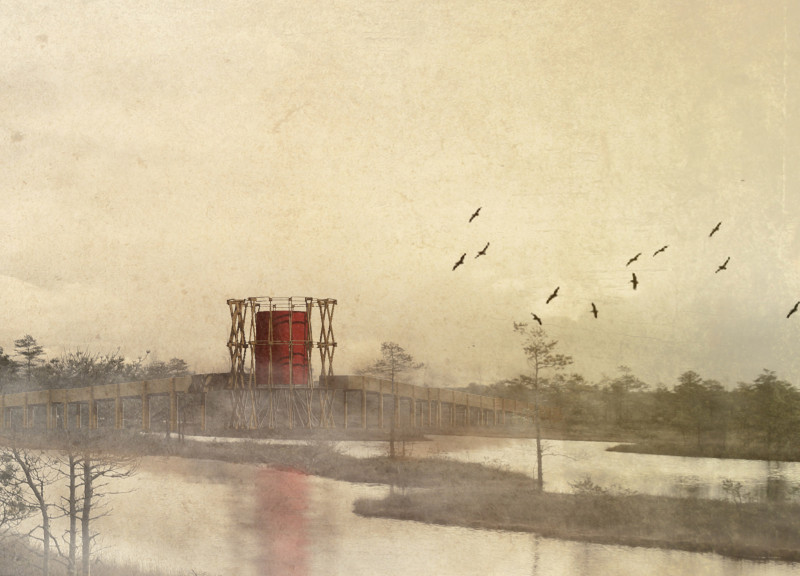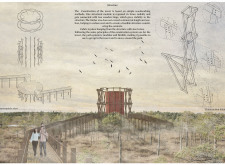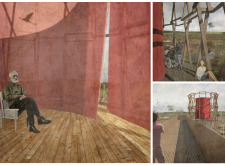5 key facts about this project
The design focuses on sensory engagement and inclusivity within a natural setting. Located in a park, it features a tower and an introspective space that aim to shift the ways people with varying abilities experience their surroundings. The concept revolves around understanding how sensory limitations affect interactions with nature, promoting a shared experience for everyone who visits.
Introspective Space
At the center of the design is an introspection space framed with fabric. This material interacts with environmental elements, allowing visitors to feel sound, moisture, dryness, wind, rain, snow, and sunlight. These sensory elements enhance the connection with nature. The fabric also provides a level of privacy, blocking views from one side and creating a quiet area for reflection.
Structural Composition
The tower is built using simple woodworking methods, where a structural module is arranged in a radial pattern and connected with two wooden rings. This method ensures stability while allowing for easy assembly. Using straightforward construction techniques prioritizes practicality without losing the structural strength needed for the design.
Path System
A flexible path system is an essential part of the project, enabling movement around the tower and through the park. This arrangement improves accessibility and accommodates users of all abilities. The pathways are carefully arranged to encourage exploration and provide clear navigation throughout the site.
Materiality
Wood is the primary material used for the tower's structure. Chosen for its commercial dimensions, timber provides a cost-effective solution while maintaining a connection with the outdoor environment. The fabric in the introspective space adds to the sensory experience, creating an inviting atmosphere that encourages interaction with natural elements.
The design encourages a thoughtful connection between structure and nature. The arrangement allows people to engage with their environment through multiple senses, fostering a reflective experience within the landscape.






















































